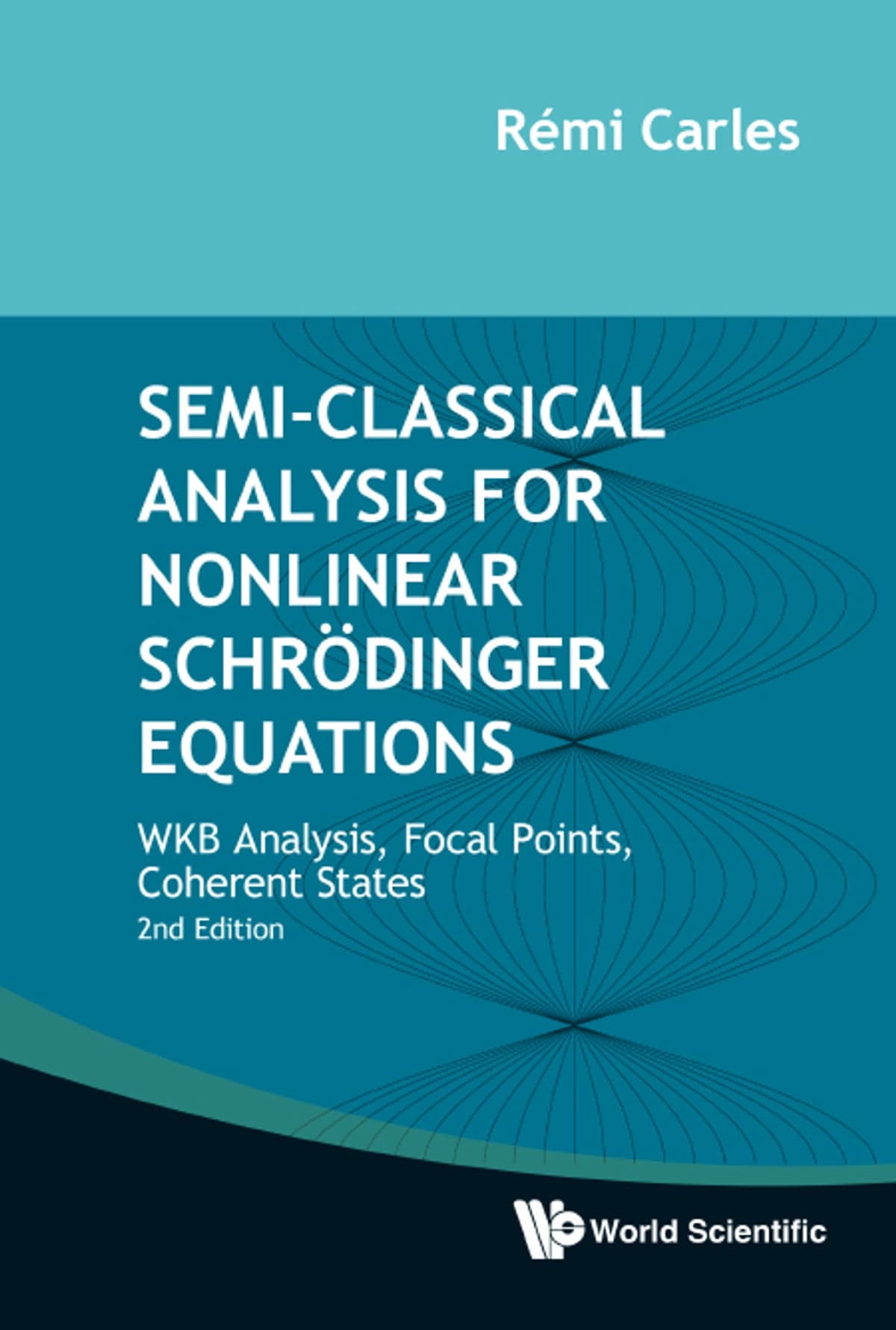All rights reserved.
The nonlinear Schrödinger equation (NLS), in its various forms, is undoubtedly one of the most important nonlinear dispersive equations, both for its relevance as an asymptotic model in the so-called modulation regime in many physical contexts (water waves, nonlinear optics, chemistry, Bose condensation, …) and for its rich mathematical properties.
This book focuses on one aspect of the theory, namely, the semi-classical analysis of the NLS written as
where the function , , , is complex-valued and plays the role of a rescaled Planck constant. The nonlinearity is local (e.g., power-like), real-valued and smooth, and is the external potential.
The semi-classical analysis concerns the study of solutions to the Cauchy problem for equation (1) as .
The book is organized in three main, essentially independent parts. The first part is concerned with the Wentzel–Kramers–Brillouin (WKB) analysis, that is, for an initial datum of the form
where the initial amplitude is complex-valued and admits the asymptotic expansion
as , one seeks the solution of (1) in the form , with
as .
The WKB approach allows to describe approximately solutions in the language of geometric optics. As shown in one chapter, the WKB analysis is also related to some instability phenomena, such as ill-posednes in Sobolev spaces of order less than the critical exponent , or of negative order, for the “usual” nonlinear equations (, in (1)).
The second part of the book treats the semi-classical limit in the presence of caustics (that is, singularities where the geometric optics picture essentially breaks down), in the special geometric case where the caustic is reduced to a point or several isolated points.
The last part was not present in the first (2008) edition of the book and addresses the nonlinear propagation of coherent states; in a certain sense, it complements the first two parts.
This part deals with the NLS
where and , and also with the case of Hartree type nonlinearities
where either , , or is smooth, real-valued and bounded together with its derivatives.
The notion of coherent states used here is to consider initial data of the form
Another chapter deals with the linear case
where is smooth and at least quadratic. Power-like nonlinearities and the Hartree-type nonlinearity are treated in the next two chapters.
In conclusion, this book presents a welcome and useful overview of an important issue concerning the dynamics of nonlinear Schrödinger equations. The author has made the necessary efforts to make clear a rather technical topic and to recall various relevant notions, thus making the book essentially self-contained (at a graduate level). He also points out interesting open problems and directions.
Rémi Carles, Semi-Classical Analysis for Nonlinear Schrödinger Equations: WKB Analysis, Focal Points, Coherent States., World Scientific Publishing, Second edition, 2020, 368 pages, Hardback ISBN 978-98-1122-790-5, eBook ISBN 978-98-1122-792-9.
Cite this article
Jean-Claude Saut, Book review: “Semi-Classical Analysis for Nonlinear Schrödinger Equations: WKB Analysis, Focal Points, Coherent States” by Rémi Carles. Eur. Math. Soc. Mag. 127 (2023), pp. 62–63
DOI 10.4171/MAG/129
